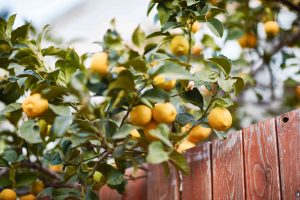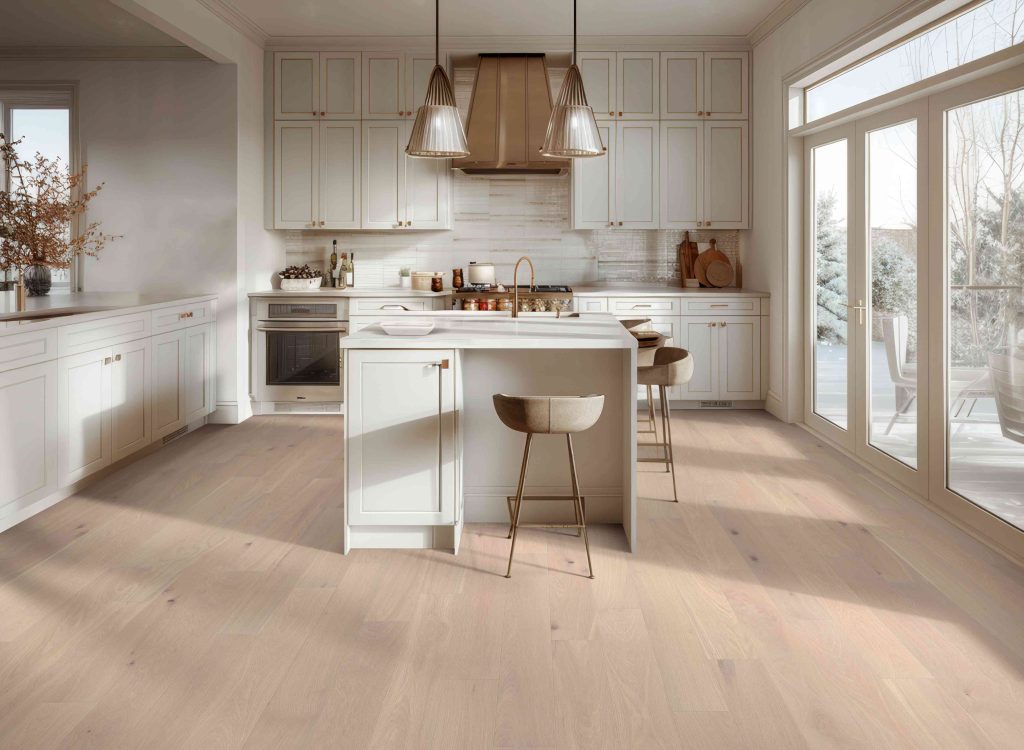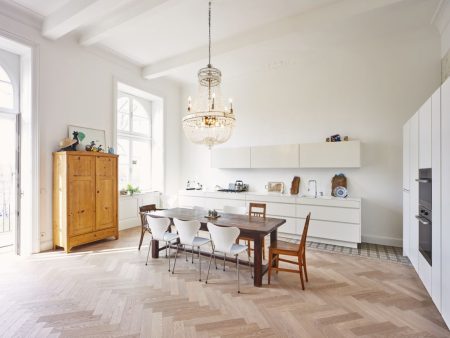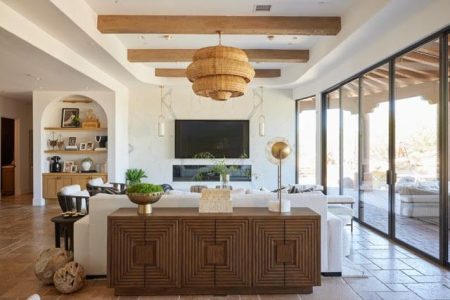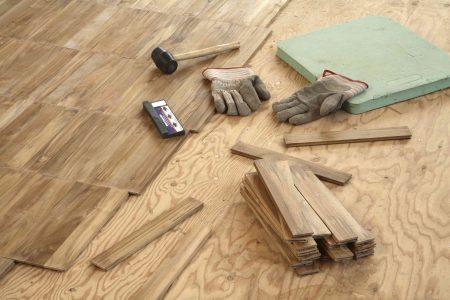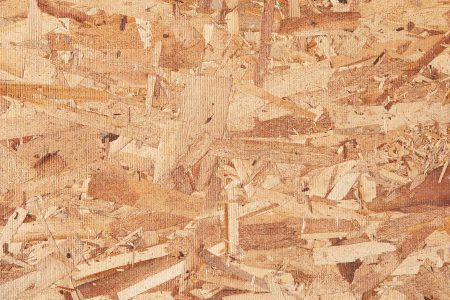Whether newly installed or a century old, a genuine hardwood floor can imbue interiors with natural beauty and warmth and complement just about any decor, making it a desirable architectural feature in most homes. But it’s also a flooring material that requires more maintenance than some other surfaces. Additionally, fading is yet another type of damage that can diminish the material’s appealing aesthetic and value.
We spoke with hardwood flooring, cleaning, and restoration experts to learn how best to prevent your timber floors from fading. Here’s what they had to say.
Meet the Expert
- Kyle McAllister is the hardwood director for Shaw Floors.
- Anthony Scott is the global product director for Havwoods.
- Josh Rudin is the owner of ASAP Restoration.
Limit UV Exposure
Wood flooring will naturally oxidize when exposed to sunlight, and this changes the color tones of the wood, Kyle McAllister, hardwood director for Shaw Floors, explains. He recommends the use of shades or blinds to limit the intensity of the sunlight.
Anthony Scott, global product director for Havwoods, agrees, saying that in addition to or in lieu of using window drapery or blinds, homeowners might want to consider installing UV-protective film on windows to block the direct sunlight.
Want more home reno project tips and inspiration? Sign up for our free daily newsletter for the latest how-tos, reno guides, and more!
Clean Regularly—But Avoid Certain Cleaners
“It’s important to sweep the floors on a regular basis, especially in high traffic areas, because any loose dirt when walked on is abrasive to the finish and will cause the finish to wear over time,” McAllister explains.
He warns, however, that when it’s time to mop, you need to double-check the contents of the cleaning product as many household chemicals can dissolve the finish over time. Ammonia, vinegar, and bleach, for instance, can strip away a wood floor’s finish. Using the right cleaning tools is equally important: consider a soft cloth—such as microfiber—mop as opposed to anything meant to scrub tile and grout. Also, stay away from steam cleaners for reasons mentioned in the next tip.
Control Humidity
Controlling humidity in spaces where there’s wood flooring is paramount as the material can absorb the moisture. This can cause thermal expansion and contraction—which can lead to warping—as well as denaturation of the waxes and sealants put on the floor to protect it, Josh Rudin, owner of ASAP Restoration, says. This not only dulls the finish but fades the stain color.
Rearrange Furniture and Use Rugs
No matter how frequently you lower the shades or close the curtains, some UV light exposure is inevitable. For this reason, Scott recommends rearranging furniture every now and then. This will help prevent uneven blotches of fading in the spots exposed to sunlight.
Rudin goes further, suggesting that you use area rugs and rotate furniture once every year or two.
“This will help create different traffic patterns and areas of exposure for a more uniform wear that is harder to spot over time,” Rudin says.
Refinish or Use Specialty Finishes
Regular waxing and sealing is needed for hardwood flooring, according to Rudin.
Mcallister agrees, adding that many homeowners with wood floors typically have a company come in and screen and recoat their floors every three to five years.
You might also want to consider using hardwood floor waxes and sealants that have UV protectants built in. This, in combination with removable UV film applied to the windows, is a great way to protect the floors from UV light without having to keep the curtains drawn constantly or more often. This way, you can enjoy the splendor of a sunlit, warmly glowing hardwood floor, Rudin says.
Keep in Mind
If you haven’t yet laid down your hardwood floors, consider choosing a wood species that’s less prone to fading. These are the lighter hardwoods including oak, ash, birch, maple, and poplar. Also, a little bit of fading over time might not be a terrible thing.
“As a natural product, wood does change color over time, and this can make your flooring look softer and even more beautiful with an added depth of tone,” Scott explains.
Read the full article here


